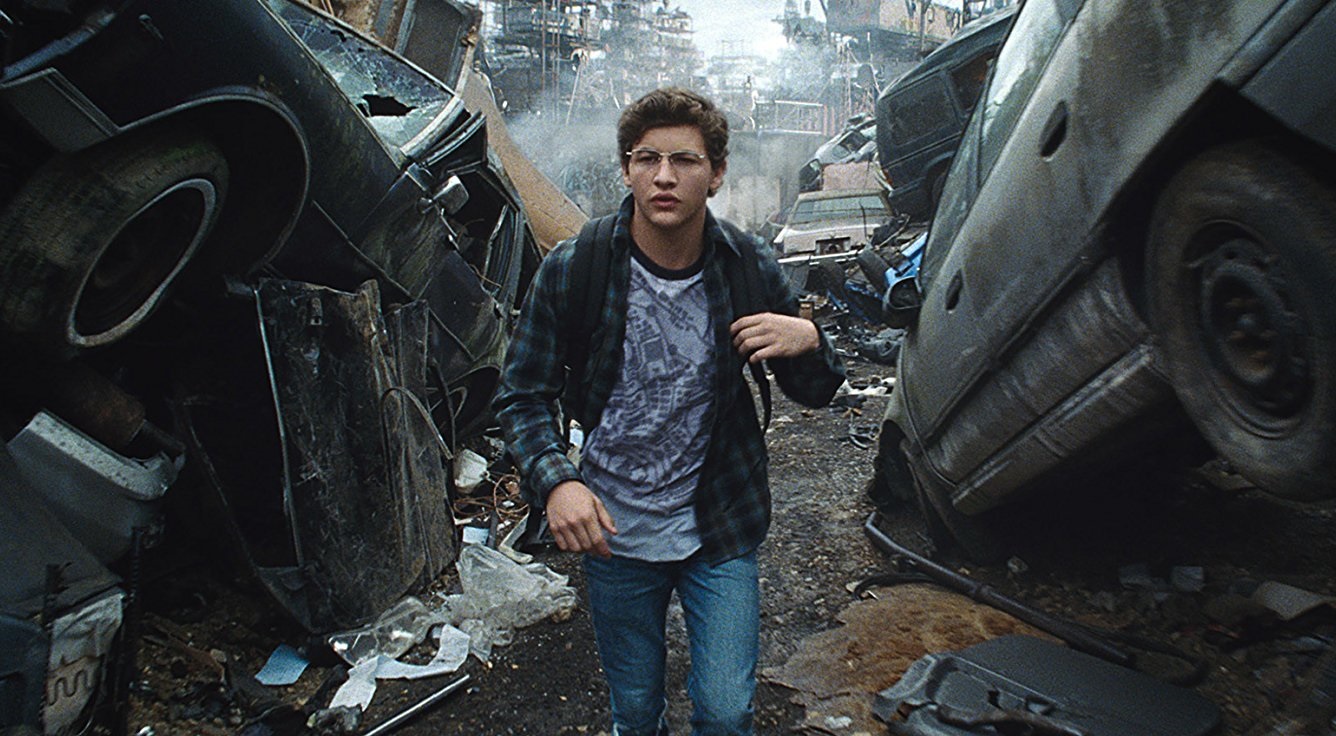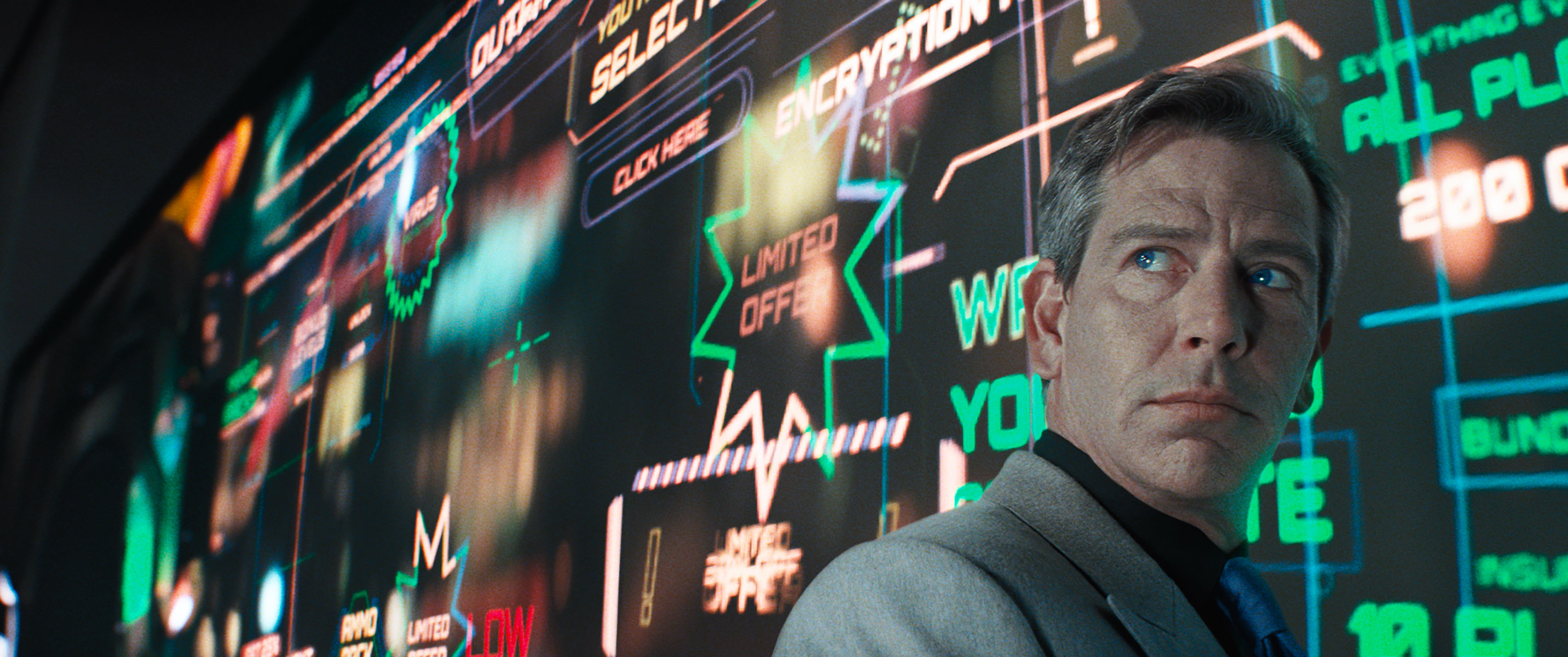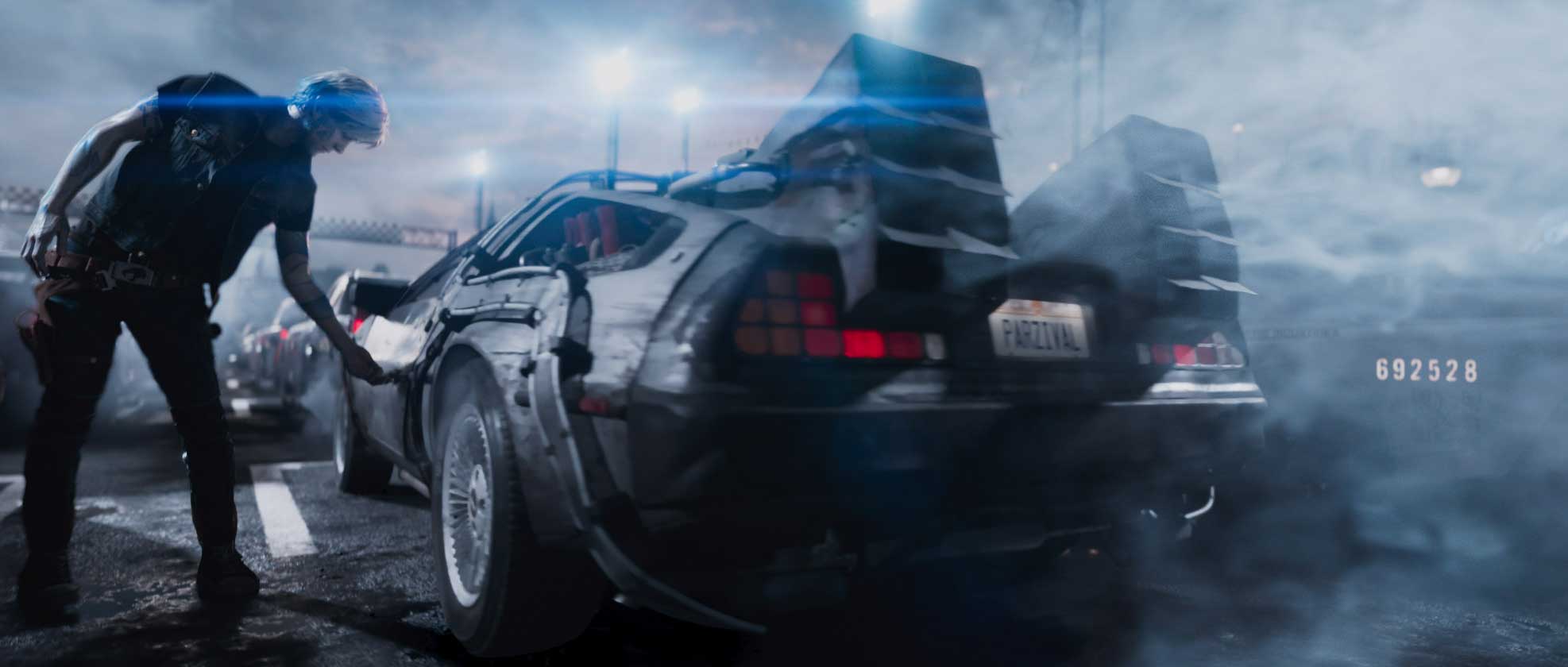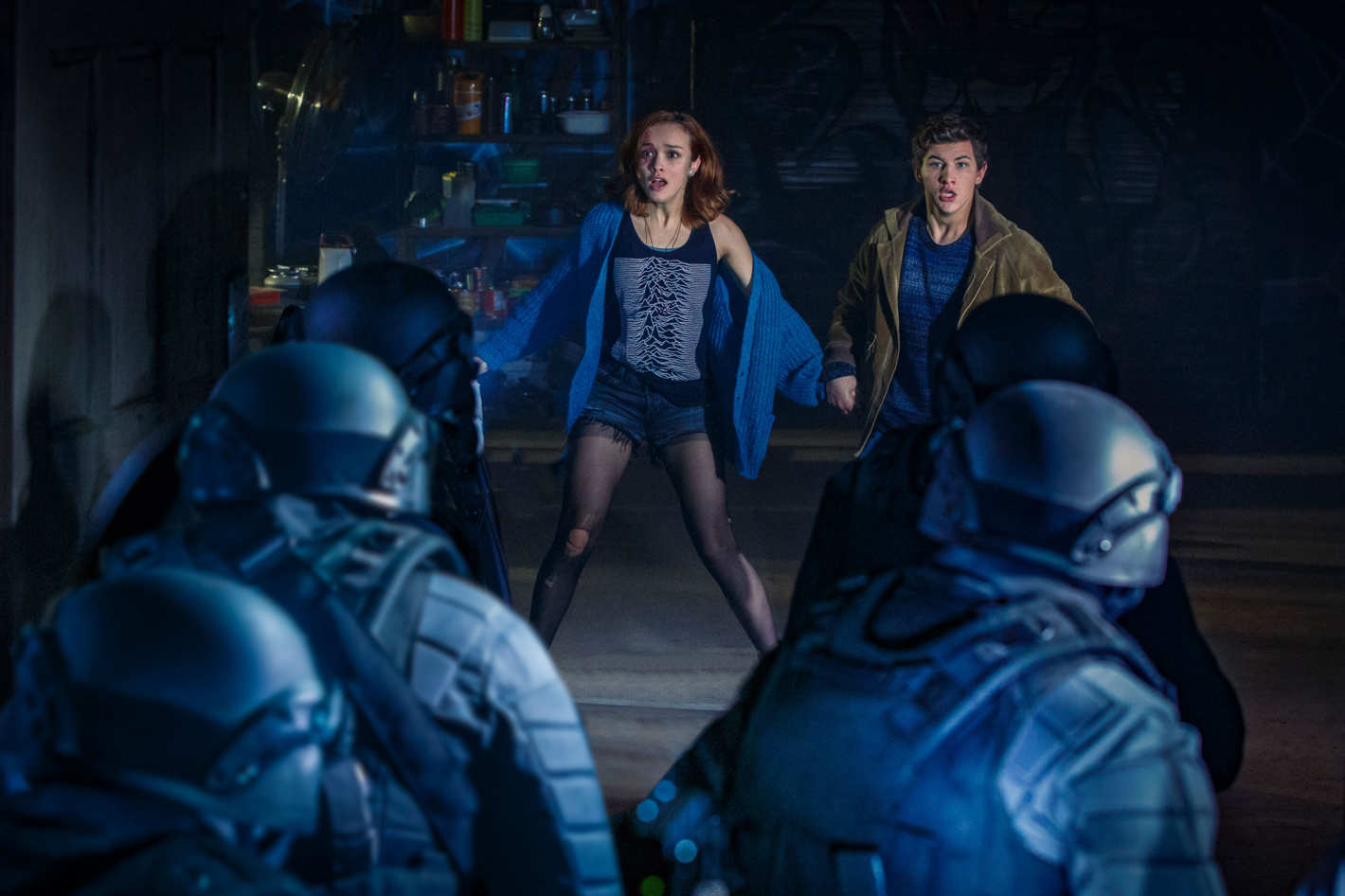 Directed by Steven Spielberg
Rated PG-13
Reviewed by James Rosario on March 31, 2018
Directed by Steven Spielberg
Rated PG-13
Reviewed by James Rosario on March 31, 2018
Watching
Ready Player One is kind of like being in a contest. I can picture 80s and 90s enthusiasts sitting around trying to one-up each other on how many obscure pop-culture references they caught and how many they understood. I imagine a scoreboard like the one featured in the film, tallying points as to who knows more useless tidbits about those bygone days. And then I imagine myself, the jaded old man, scoffing and snorting, “I was there.” It’s a strange sensation seeing your childhood cranked up to eleven and projected onto a movie screen, but that’s essentially what Spielberg has done. He took all the commercials we sat through as kids (we didn’t have the option to skip them back then), manipulated them for mass nostalgic responses, and projected them on to a giant screen. Unfortunately, that’s all he did. What he forgot to include was characterization, story, humor, and heart. I love nostalgia, but I love competent storytelling and compelling characters more.

In the year 2045, the world has gone to hell. Everyone spends their time in a virtual world known as “The Oasis.” There, they can be whoever they choose, have all sorts of adventures, and live exciting lives. Loner Wade Watts (Tye Sheridan) spend his Oasis time as Parzival, an elfish anime avatar who chums around with an ogre (Lena Waithe), a samurai (Win Morisaki), and a ninja (Philip Zhao). They, and many like them, including Art3mis (Olivia Cook), are in search of a hidden “Easter Egg” left by the game’s late creator, James Halliday (Mark Rylance). Whoever finds this Easter egg will become the heir to Halliday’s stock, fortune, and most importantly, become the ruler of The Oasis. Of course, there is an evil corporation headed by greedy CEO, Nolan Sorento (Ben Mendelsohn), who is after the prize and will stop at nothing to win it.

I don’t
need my action/adventure spectacles to be rife with political commentary, but I do expect some level of responsibility from their characters. Stopping a maniacal CEO from messing up your video gaming isn’t my idea of lofty motivations. Here’s my problem with this premise and how it’s handled: the real world in which everyone lives in—the one where they must return to eat, sleep, and go to the bathroom—is something resembling a post-apocalyptic refugee camp. While not as bleak as the world of Alfonso Cuarón’s
Children of Men (2006), it does begin to approach it (a major difference being that the general tone of hopelessness of
Ready Player One’s world was created by an asinine event known as the “corn syrup drought”). Yet, with all this despair, the only thing that seems to be of importance to anyone is a video game. No attempts are made to improve the poverty of the real world, only rallying cries to “Save the Oasis!” This annoyance is furthered by Samantha’s (Art3mis’s) proclamation that the discovery of Halliday’s Easter egg has real world repercussions for her—and then it’s never mentioned again. It’s just gone. In the end, real life doesn’t seem to be changed at all—people are still impoverished and hungry—but don’t you worry, everything is fine because we can all still escape into a video game. Real world? Who needs it? I find the level of blind-eye escapist attitudes portrayed in the movie somewhat disturbing and possibly dangerous.

Perhaps because of these skewed motives (or simply bad writing), the characters are undefined and boring. They are completely interchangeable. Anything that hero Wade does could easily be done by any of his under-developed cohorts and it wouldn’t make a lick of difference. This is troubling, but Spielberg is no fool. I don’t think he cared much about the story to begin with. He's showing off. I think he spent most of his energies ensuring that 40-somethings such as myself were properly enraptured by Thundercats belt buckles, DeLoreans, and Klingon Bat’Leths (and for us punk rockers, I saw you Dead Kennedys jacket and Exploited t-shirt). While fun, this is all fluff. It’s nothing more than trivia—to us, and to the characters, whose interest in it goes no farther than that. Oh, you’ve heard of Battletoads? How cool and interesting you must be. (I did get a kick out of the near imperceptible Toshiro Mifune reference. Spielberg threw one in for us film nerds too, it would seem.)

All said, I spent most of the film attempting to spot as many references to my childhood as I could. I had fun doing that, but it was distracting to the plot. I found myself even less interested in the story than I was already. It’s hard for me to imagine what those who
aren’t nostalgic for the 80s and 90s will make of all these references. I suppose those years are “hip” or something these days (which I can’t get my head around), but what is the film without them? I’ll tell you. It’s a loud, thinly plotted, extended action sequence that serves little to no purpose. I could have stayed home and watched a YouTube compilation of old toy commercials and accomplished nearly the same thing as I did by going out.

Visually,
Ready Player One is on its own level. It raises the bar of what can be accomplished in the realm of special effects and animation. Spielberg, of course, has always been on the cusp of this, and
Ready Player One proves that he still is. The extended sequence that takes place within Kubrick’s
The Shining is nothing short of remarkable. It’s seamless to the point of being mind-boggling. It really is something to see, and the most fun I had the entire movie (it's
the reason I would recommend seeing the film). I didn’t hate
Ready Player One, but I did see right through its manipulative veneer. Strangely, it’s kind of nice having my generation be marketed to again. It’s been a while.
Ready Player One is now playing at
Grail Moviehouse, and other area theaters.
For more film reviews, plus records reviews, podcasts, and more, please visit
THE DAILY ORCA.
Bcome of a patron of James Rosario and The Daily Orca by visiting their
PATREON page.